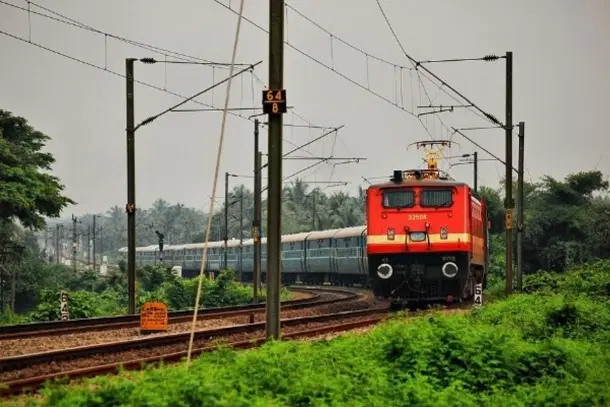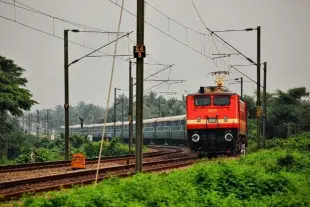Infrastructure
Indian Railways To Procure More Sensor-Based Automatic Machines To Detect Rail Fracture
Arun Kumar Das
Jan 09, 2023, 10:25 AM | Updated 10:22 AM IST
Save & read from anywhere!
Bookmark stories for easy access on any device or the Swarajya app.


The Ministry of Railways is exploring ways of faster introduction of modern technology to eliminate track defects and other related problems.
This comes following a number of derailment incidents, and the issue of safety of train operation has become a serious concern.
Since it is difficult to detect the rail defects by using manual ultrasonic flaw detection (USFD), automation is required in a big way to ensure safety.
USFD technique is widely used on the Indian Railways network for detecting flaws in rails/welds for safety.
According to the railways, introduction of the large rail USFD test car for ultrasonic testing and rail grinding car is being considered for detection of rail fracture.
There is a need for rapid introduction of sensor-based automatic machines to detect rail fracture with a complete replacement of manual systems in every section.
An Australian technology was used in the Konkan Railways to detect rail fractures on about 600 km rail line and it was found to be quite effective to prevent track failures in time.
There is proven technology to detect rail fracture on a faster pace and the state-of-the-art systems would be adopted by Indian Railways to prevent rail mishaps, the railways maintains.
Rail fractures are caused for various reasons including rapid temperature variation, passenger loading and cargo loading exceeding designed load with no proper control existing to check overloading among others.
Excessive shaft weight exceeding the prescribed wheel set load and excessive force applied to rail increasing the possibility of damage to rail.
The schedule of periodical inspections has to be revised for the proper maintenance cycle.
Strict management of cargo loading weight is required to prevent increased possibility of rail damage due to heavy dynamic load due to excessive axle load.
Rails need to be investigated for corrosion as there is a requirement to prevent corrosion for rail safety.
Arun Kumar Das is a senior journalist covering railways. He can be contacted at akdas2005@gmail.com.





